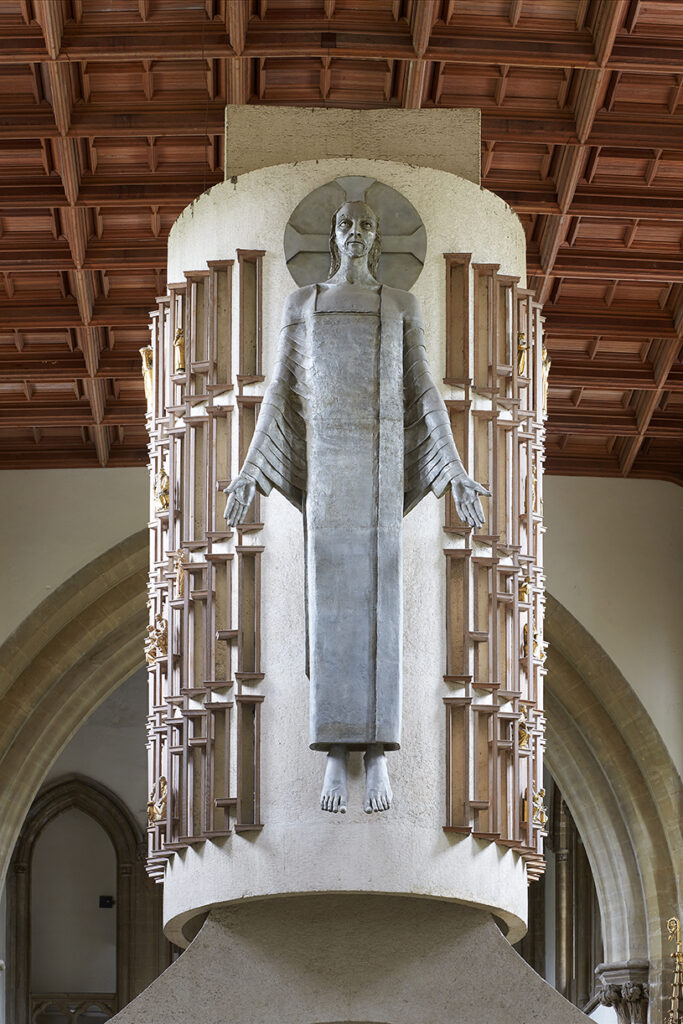
In his lecture to The Friends of Llandaff Cathedral in July 1950, George Pace, the newly appointed Architect to the Dean and Chapter pointed out that –
In mediaeval days Llandaff in common with other great Cathedrals… had a pulpitum sited at the West end of the choir. All vestige (of one in this Cathedral) has gone and nothing remotely like a pulpitum was attempted in the Prichard restoration…. therein lies the criticism that (Llandaff’s Cathedral) was rather like a large parish church…
Mystery should be veiled and vista should open upon vista; from the moment of entering the Cathedral the journey to the High Altar should be by subtly designed stages.
Pace’s view coincided with that of Dean Glyn Simon, who had appointed him, and the Chapter agreed that some form of arch, to carry at least part of the organ and which was also to display some piece of outstanding contemporary art should be constructed at the point where a pulpitum would have been in earlier days, but it was not to obscure the view throughout the whole length of the cathedral at ground level.
Two schemes were put forward by Pace. The first was for a baldacchino on four columns, with a painting of an appropriate subject such as “The Last Judgement” on its underside, to carry a division of the organ above a fixed nave altar.
The artist whom the Dean and Chapter had in mind for the painting was Stanley Spencer.
The second scheme, which was to win the day, was a double wishbone concrete arch surmounted by a hollow drum to house the “positive” division of the organ. The artist proposed to fashion the figure of “Christ in Glory” that would be mounted on the West face of the drum was Jacob Epstein. A portable nave altar was envisaged in the space between the legs of the arch. As with the commissioning of members of the pre-Raphaelite brotherhood to contribute to the restoration in the nineteenth century the idea of employing either of these contemporary and controversial artists in the twentieth raised a storm of protest.
The Dean and Chapter negotiated with the War Damage Commission that the monies allocated for the replacement of stained glass lost in the bombing could be used to fund work or works of art in other media, so that funds towards the cost of casting the “Majestas” in aluminium were at least partially available. After Sir Jacob’s death in 1959 the original plaster figure from which the Majestas was cast was gilded and moved to Riverside Church in New York.
The figure is 16 feet high, weighs 7cwt and was cast by the Morris-Singer works in Lambeth.
On the eve of the rehallowing of the Nave on 10th April 1957, Bob Evans, the newly appointed curate of Llandaff, found himself sitting silently in the nave alongside Epstein. At last, the sculptor turned to the young priest and said “Well?” “I told him what I could see” was Bob’s reply and later, with the foolishness of youth…he added “Was it difficult for you, a practicing Jew, to create a Christ for a Christian congregation?” Epstein replied, “All my life I have searched for truth and beauty and, in the end, I discovered that it is in the idea of the Christ that they are to be found.”
Llandaff’s Christ looks not at the congregation at his feet but through the clear glass of the west window of the Cathedral to the wider world beyond.



